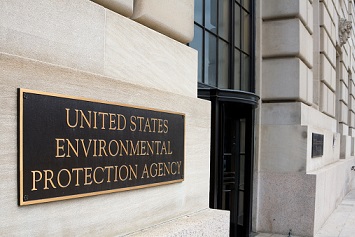Two EPA offices have issued memos revising and/or clarifying Agency policies on collecting information from the regulated community.
One memo from the Office of Water (OW) applies specifically to noncompliance/enforcement data the Agency needs to implement the Clean Water Act (CWA). The second memo applies to information needed for compliance/enforcement purposes under multiple statutes, the Clean Air Act, and the Resource Conservation and Recovery Act (RCRA) as the CWA. A point emphasized in both memos is that EPA administrators conducting the information requests should do so in a manner that recognizes and respects the constraints and business considerations under which the recipients are operating.
These information requests are separate from public comments the EPA requests on proposed regulations or draft guidance and policy documents.
Office of Water
The OW policy was issued under the auspices of CWA Section 308. That section provides the EPA with the authority to collect information from the regulated community, which may be needed to fulfill the purposes of the Act (e.g., development of sector-specific effluent limitations). This information may include monitoring data, as well as information about the equipment used to conduct monitoring. Section 308 also authorizes the Agency to collect information on possible violations of effluent limitations, but the new policy does not apply to compliance and enforcement activities.
Most of the new policy discusses Section 308 letters, the formal mechanism for obtaining information. But one intent of the new policy is to encourage EPA staff to work with regulated entities to acquire the information without resorting to sending letters. The concern, the policy notes, is that the letters have “the potential to impose a significant burden on the regulated community.”
Given that concern, the policy directs that administrators should first learn if the information is already in the Agency’s possession, thereby removing the need to make inquiries outside the Agency. If the information is not internally available, administrators must take several actions before sending letters, including engaging with the regulated community early in the process to discuss the EPA’s information needs and efficient strategies for providing that information to the Agency.
“Only after failed early engagement, the EPA may prepare an initial draft of the CWA Section 308 letter to share with the potential recipient and to promote further engagement and dialogue,” the policy continues.
In addition, the policy instructs that Section 308 letters be carefully worded to avoid imposing unnecessary burdens on the recipient. For example, the letters should refrain from using language requiring “any” and “all” information and must be clear about the scope of what is being sought. Also, letters should provide the recipient with ample time to collect the information and, generally, should not direct that information be provided in a specific form. If the information must be sent in a specific form, the policy directs that staff work with the recipient “to minimize the recipient’s level of effort as much as possible.”
Drafts of letters must be approved by EPA senior staff. Even after approval, the policy directs that regulatory staff engage with the potential recipients to discuss the information request and attempt to collaborate on a reasonable strategy for the EPA to obtain the required information.
The OW memo is available here.
OECA
Obtaining information for compliance and enforcement purposes is addressed in the second memo from the Office of Enforcement and Compliance Assurance (OECA) to the Agency’s regional counsel and enforcement officials. The information contemplated in the policy is intended to assist the Agency in determining whether a violation has occurred. The memo lists best practices that “should create a consistent practice among the Regions and [Office of Civil Enforcement] Divisions, which will improve certainty for the regulated community.” The more specific goals include minimizing transaction costs for both the recipient and the government, using the appropriate tone in requesting information, and providing recipients with sufficient time to respond.
In contrast to the OW policy, the OECA memo indicates that there may be superior benefits to obtaining information formally rather than informally.
“Gathering documentation through a formal information request may avoid the potential for confusion and misinterpretation or delays in obtaining needed information,” states the OECA. “Formal information requests can also enhance the quality of the evidence collected and ensure the appropriate management control over the scope and types of information requested from the facility.”
Similar to the OW memo, the OECA’s best practices include resorting first to in-house (Agency) sources of information. Also, the memo states that staff should not ask for information for which there is no reasonable use; should use potential penalty language guardedly (e.g., when requesting information for a small entity with little or no experience with the EPA); should write as plainly as possible, including clear instructions on what information the Agency needs; and should provide a response time that is reasonable for the amount of information that needs to be gathered.
The OECA memo is available here.

